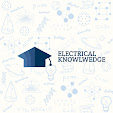WHAT IS DRIVE SYSTEM??
INTRODUCTION TO DRIVE
SYSTEMS
Drives:
Systems employed
for motion control are called drives. Motion control is required in industrial
as well as domestic applications like transportation system, rolling mills,
paper mills, textile mills, machine tools, fans, pumps, robots, washing
machines etc. Motion control may be translational, rotational or combination of
both. Generally, a drive system is basically has a mechanical load, a
transmission system and a prime mover. The prime mover may be I.C. engine,
steam engine, turbine or electric motors. However, electric motors are
predominantly used employed as prime mover due to certain advantages.
Advantages of Electric Drives:
· Flexible control characteristics.
· Starting
and braking is easy and simple
· Provides
a wide range of torques over a wide range of speeds (both ac and dc motor)
· Availability
of wide range of electric power
· Works
to almost any type of environmental conditions
· No
exhaust gases emitted
· Capable
of operating in all 4 quadrants of torque –speed plane
· Can be started and accelerated at very short time
Choice of Electrical Drives:
The choice of an electrical drive depends on a
number of factors. Some important factors are:
Ø Steady state operation
requirements: (nature of speed-torque characteristics, speed regulation, speed
range, efficiency, duty cycle, quadrants of operation, speed fluctuations,
rating etc)
Ø Transient operation
requirement(values of acceleration and deceleration, starting, braking, speed
reversing)
Ø Requirement of sources:(types of
source, its capacity, magnitude of voltage, power factor, harmonics etc)
Ø Capital and running cost,
maintenance needs, life periods
Ø Space and weight restrictions
Ø Environment and location
Ø Reliability
Basic Elements of the Electric Drive Systems:

A modern electric drive
system has five main functional blocks as shown above a mechanical load, a
motor, a power modulator, a power source and a controller.
Power source: The power source provides the energy to the drive system. It may be
dc or ac (single- phase or three-phase)
Power Converter: The converter interfaces the motor with the power source and
provides the motor with adjustable voltage, current and frequency. During
transient period such as starting, braking and speed reversal, it restricts
source and motor current within permissible limits Also the converter converts
the electric waveform into required signal that requires the motor.
Types of modulator:
·
Controlled
Rectifier(ac to dc)
·
Inverter
(dc to ac
· AC Voltage Regulator (ac to ac
· DC Chopper (dc to dc)
·
Cyclo-converter
(ac to ac) (Frequency converter)


No comments:
If you have any doubts, please let me know